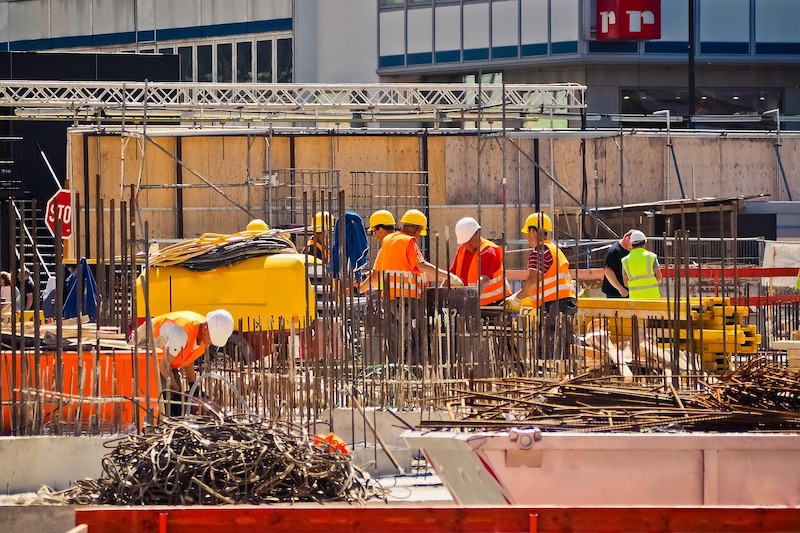Construction employment in January remained below pre-pandemic levels in all but eight states, according to an analysis by the Associated General Contractors of America of government employment data released today, while more firms have reduced headcount than have added to it in the past year, the association’s recent survey shows. Association officials said the jobs figures and survey results underscore the need for federal measures to stem future sector job losses.
“Despite improvement in many sectors of the economy, nonresidential contractors are coping with widespread project cancellations and postponements, soaring materials costs, and lengthening delivery times,” said Ken Simonson, the association’s chief economist. “That combination makes further job cuts likely in many states.”
The survey, which included responses from nearly 1500 firms, found 34% had reduced their employee count in the past year, compared to just 20% that had added employees. More than three-fourths of the firms had experienced project cancellations or deferrals, while only 21% reported winning new projects or add-ons to existing projects in the past two months.
Seasonally adjusted construction employment in January 2021 was lower than in February 2020—the last month before the pandemic forced many contractors to suspend work—in 42 states and was unchanged in the District of Columbia. Texas lost the most construction jobs over the period (-51,900 jobs or -6.6%), followed by California (-36,200 jobs, -4.0%), and New York (-26,000 jobs, -6.4%). Louisiana experienced the largest percentage loss (-14.0%, -19,200 jobs), followed by Wyoming (-9.6%, -2,200 jobs).
Only eight states added construction jobs from February 2020 to January 2021. Idaho added the most jobs (4,500 jobs, 8.2%), trailed by Utah (3,300 jobs, 2.9%), Alabama (6,100 jobs, 6.4%) and Arkansas (1,900 jobs, 3.6%,). Idaho added the highest percentage, followed by Arkansas and Alaska (3.0%, 500 jobs).
From December to January,19 states and D.C. lost construction jobs, 27 states added jobs, and there was no change in Alaska, North and South Dakota, and Wyoming. California had the largest loss of construction jobs for the month (-4,000 jobs or -0.5%), followed by South Carolina (-3,200 jobs, -3.0%) and Illinois (-3,200 jobs, -1.4%). South Carolina had the largest percentage decline, followed by Wisconsin (-2.4%, -3,000 jobs).
Florida added the most construction jobs over the month (3,500 jobs, 0.6%), followed by Texas (0.4%). Vermont had the largest monthly percentage gain (3.4%, 500 jobs), trailed by Idaho (3.3%, 1,900 jobs).
Association officials said demand for construction will continue to suffer amid pandemic-induced economic uncertainty and urged federal officials to enact measures to help stem additional job losses in the sector. These new measures should include new federal investments in infrastructure, ending tariffs on key construction materials, addressing supply chain backups and avoiding costly and unneeded new regulatory burdens.
“The pandemic is driving away projects, contributing to spiking materials prices and helping make delivery schedules unreliable,” said Stephen E. Sandherr, the association’s chief executive officer. “Contractors will not be able to build back better if they have to keep paying higher prices for materials that rarely arrive on time.”
View state February 2020-January 2021 data and rankings and December-January rankings. View AGC’s survey.
Related Stories
Market Data | Nov 15, 2017
Architecture Billings bounce back
Business conditions remain uneven across regions.
Market Data | Nov 14, 2017
U.S. construction starts had three consecutive quarters of positive growth in 2017
ConstructConnect’s quarterly report shows the most significant annual growth in the civil engineering and residential sectors.
Market Data | Nov 3, 2017
New construction starts in 2018 to increase 3% to $765 billion: Dodge report
Dodge Outlook Report predicts deceleration but still growth, reflecting a mixed pattern by project type.
Market Data | Nov 2, 2017
Construction spending up in September; Down on a YOY basis
Nonresidential construction spending is down 2.9% on a year-over-year basis.
Market Data | Oct 19, 2017
Architecture Billings Index backslides slightly
Business conditions easing in the West.
Industry Research | Oct 3, 2017
Nonresidential construction spending stabilizes in August
Spending on nonresidential construction services is still down on a YOY basis.
Market Data | Sep 21, 2017
Architecture Billings Index continues growth streak
Design services remain in high demand across all regions and in all major sectors.
Market Data | Sep 21, 2017
How brand research delivers competitive advantage
Brand research is a process that firms can use to measure their reputation and visibility in the marketplace.
Contractors | Sep 19, 2017
Commercial Construction Index finds high optimism in U.S. commercial construction industry
Hurricane recovery efforts expected to heighten concerns about labor scarcities in the south, where two-thirds of contractors already face worker shortages.
Multifamily Housing | Sep 15, 2017
Hurricane Harvey damaged fewer apartments in greater Houston than estimated
As of Sept. 14, 166 properties reported damage to 8,956 units, about 1.4% of the total supply of apartments, according to ApartmentData.com.

















